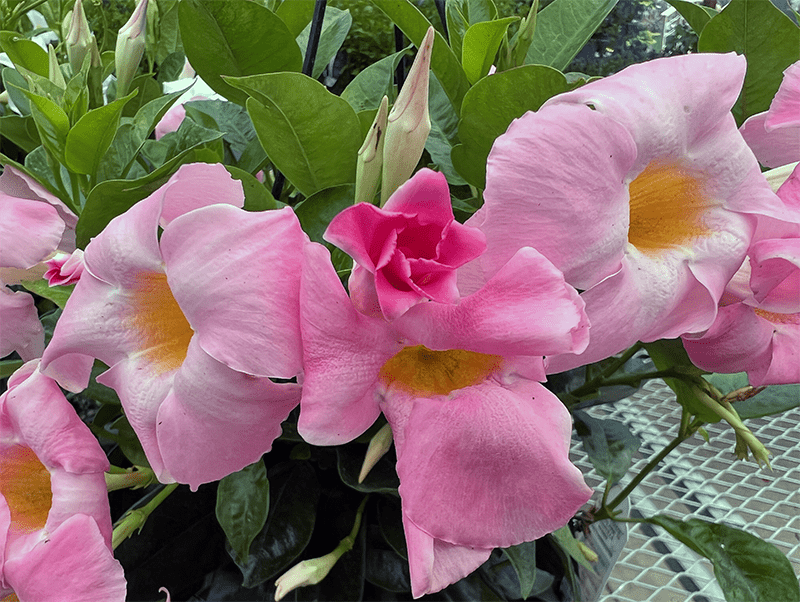Name: Mandevilla cultivars and hybrids, especially the shorter varieties formerly known as Dipladenia
Type of Plant: Back in the day, there were the vining Mandevilla and the bushy, but otherwise very similar Dipladenia. Now that plants are able to grouped according to genetics and not just appearance, the plant artist formerly known as Dipladenia is now rightfully grouped with its kin, the Mandevillas.
Why I Love This Plant: No matter what you call it, this tropical plant is one of the easiest and most satisfying summer annuals you can grow. You can have them in a hanging basket, or plant them in containers, window boxes, or directly in the ground. Wind tolerant, full sun lovers, and no deadheading required!
A Word to the Wise: These plants are pretty pest-free outdoors, but they can be prone to mealy bug and other insects when grown in the house.
In my experience, these plants are easy to keep from year to year but unless you have a greenhouse and ideal growing conditions in the winter, they don’t come into flower until later in the summer. I’d rather buy a new one every spring that’s already in bloom, and use my indoor winter space for other plants.

So many great colors of Mandevilla in the Sun Parasol series! This one is Sunbeam, planted with a begonia in a large pot.

The beauty of these bushy Mandevilla varieties is that they can be grown in pots, hanging baskets, window boxes or in the ground.

This one captures my heart because the pink buds are darker but the aging flowers are lighter.


Is Mandevilla the official name? I need to settle an argument with a friend who says dipledenia
Yes, Mandevilla is the official name. In 1933, the dipladenias were re-classified to become mandevillas, but Dipladenia persisted in-plant labeling. Dipladenia is still used as a common name for these plants, but they and the larger varieties are all in the genus Mandevilla.